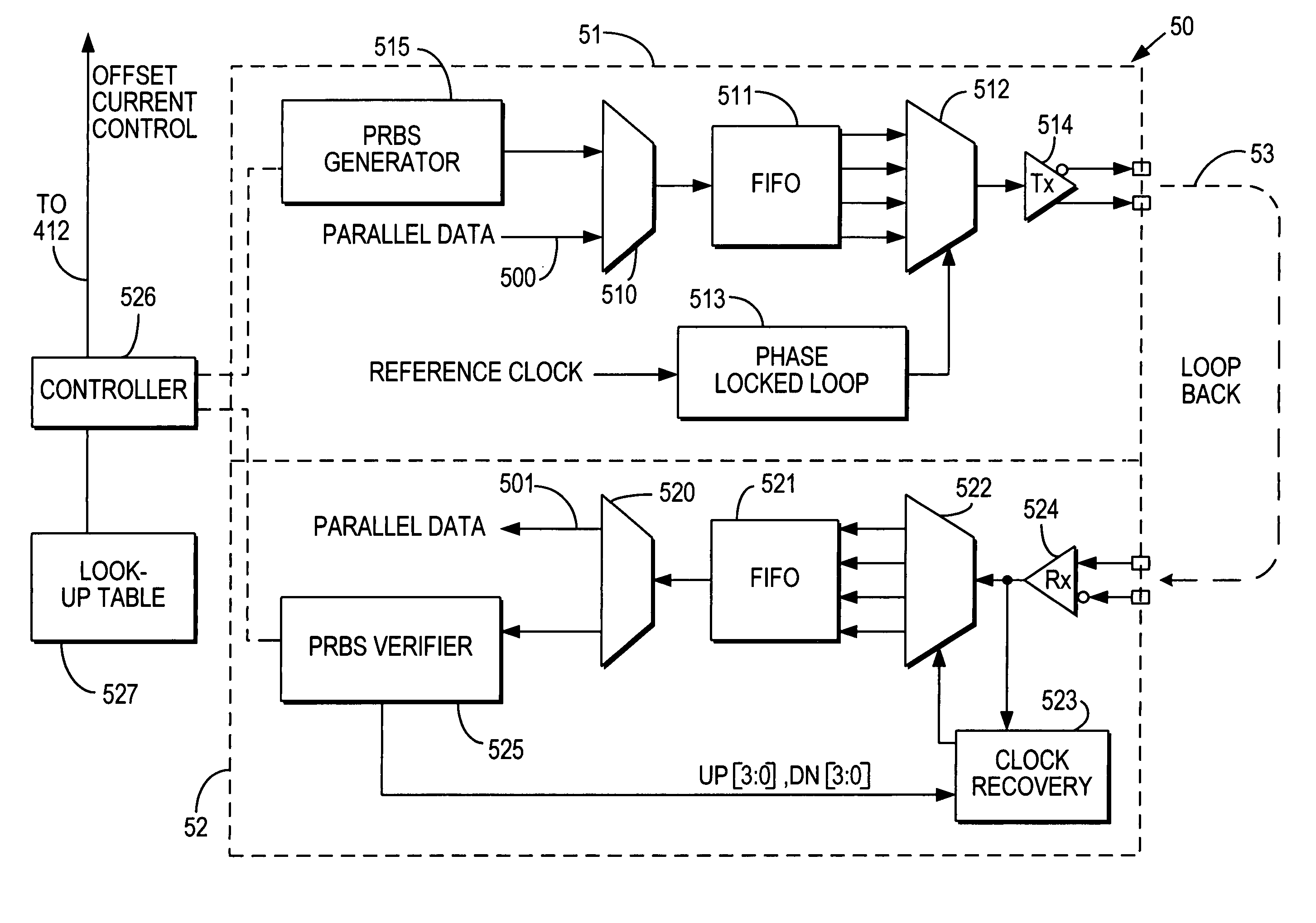Alignment of recovered clock with data signal
a clock signal and data technology, applied in the direction of digital transmission, generating/distributing signals, instruments, etc., can solve the problems of charging pump current mismatch, alignment error, etc., and achieve the effect of small linear rang
- Summary
- Abstract
- Description
- Claims
- Application Information
AI Technical Summary
Benefits of technology
Problems solved by technology
Method used
Image
Examples
Embodiment Construction
[0019]As described above, the present invention provides reliable eye centering—i.e., clock-data alignment—by manipulating one of the factors that causes clock-data misalignment. Although the factor is something that one ordinarily would want to eliminate, the fact that it is not the only factor means that manipulating it can cancel out the effect of the other factors. Preferably, the factors that cause clock-data misalignment in a clock data recovery environment are charge pump current mismatch in the loop circuit of the clock data recovery circuitry, process and temperature variations, and clock / data delay variations, and the factor that preferably is manipulated in accordance with the present invention is charge pump current mismatch.
[0020]The invention will now be described with reference to FIGS. 1–5.
[0021]FIG. 1 shows as waveform A a clock having period T (i.e., a clock rate or frequency of 1 / T). The clock signal preferably includes high intervals each of duration T / 2, separat...
PUM
 Login to View More
Login to View More Abstract
Description
Claims
Application Information
 Login to View More
Login to View More - R&D
- Intellectual Property
- Life Sciences
- Materials
- Tech Scout
- Unparalleled Data Quality
- Higher Quality Content
- 60% Fewer Hallucinations
Browse by: Latest US Patents, China's latest patents, Technical Efficacy Thesaurus, Application Domain, Technology Topic, Popular Technical Reports.
© 2025 PatSnap. All rights reserved.Legal|Privacy policy|Modern Slavery Act Transparency Statement|Sitemap|About US| Contact US: help@patsnap.com



